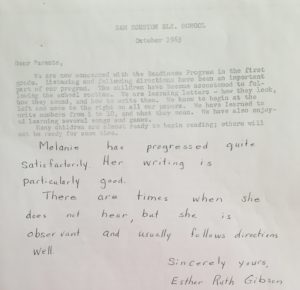NOTE: This post concludes a four-part blog about a recent trip to the town where I was born: Pampa, Texas.
Roadway sights defined the long drive to my hometown. I should’ve paid more attention as clues announced themselves. It started with a first omen one hour in.

We made the trip to return my eldest sister to our mother’s side at our hometown church. The ironic presence of the smoke — in effect, color, and timing — screamed.

Nine hours later, we spied the little green sign we’d anticipated all day.
Its sighting followed miles of non-stops through big cities, small towns, and farming villages. Scattered among the people, buildings, and roadways were landscapes ranging from summer green to drought yellow.
Surrounding the city limits sign, two elements stood out:
- A yellow-gold ring midway down the pole linked the green rectangle at its top, an unique marriage of city marker to high school colors of green and gold.
- Cloudy skies engulfed the entire sign. I gulped, remembering why I had come back home.
My mind began to race. It linked this moment to the morning’s roadway fire.
Aha! Is this another omen or has my mind shifted into overdrive?
Driving toward our hotel, my mood shifted to near-mania. Storefronts I recognized. Bricked streets of downtown. High school hangouts. Childhood church.
Then, as I drove down the main street, the quick stop stores began to pop up like little Whack-a-Moles. They each demanded attention, their names worth the price and tears of driving to Pampa.
Only one of these stores existed during my childhood. I remember Toot ‘n Totum as Toot ‘n Totem. But why did today’s “u” in Totum replace yesterday’s “e” in Totem? No idea, but I remember the chain’s ad campaigns : you toot your horn; we’ll tote out to you.
Amazing what the mind remembers after a half-century!
The next day, we breakfasted at another first.
United Supermarket offers what I dubbed the food quadrifecta (and yes, I made up that latter word: in my dictionary, it means “four of something”).

In one building, United offers a stand-alone of these four: grocery store, delicatessen, dine-in restaurant, and a full-service Starbuck’s.
A lifetime traveling the globe and never has this Houstonian seen a combination quite like this.
Departing this place of quick stops and quadrifectas, I realized there’s something to learn in the laughter and the sadness discovered this trip.
It’s called the Circle of Life, when home morphs into hometown.
A place I used to know.























